In many Western countries, December 6 (December 19 in Eastern Christian traditions) marks the Feast of St. Nicholas of Bari, Bishop of Myra. Known in his lifetime for his advocacy for those experiencing financial need, St. Nicholas’s legacy as the patron saint of children and the poor has become embodied through heritages of gift giving. Different gift giving traditions abound, with many children and families leaving stockings hung on Christmas Eve.
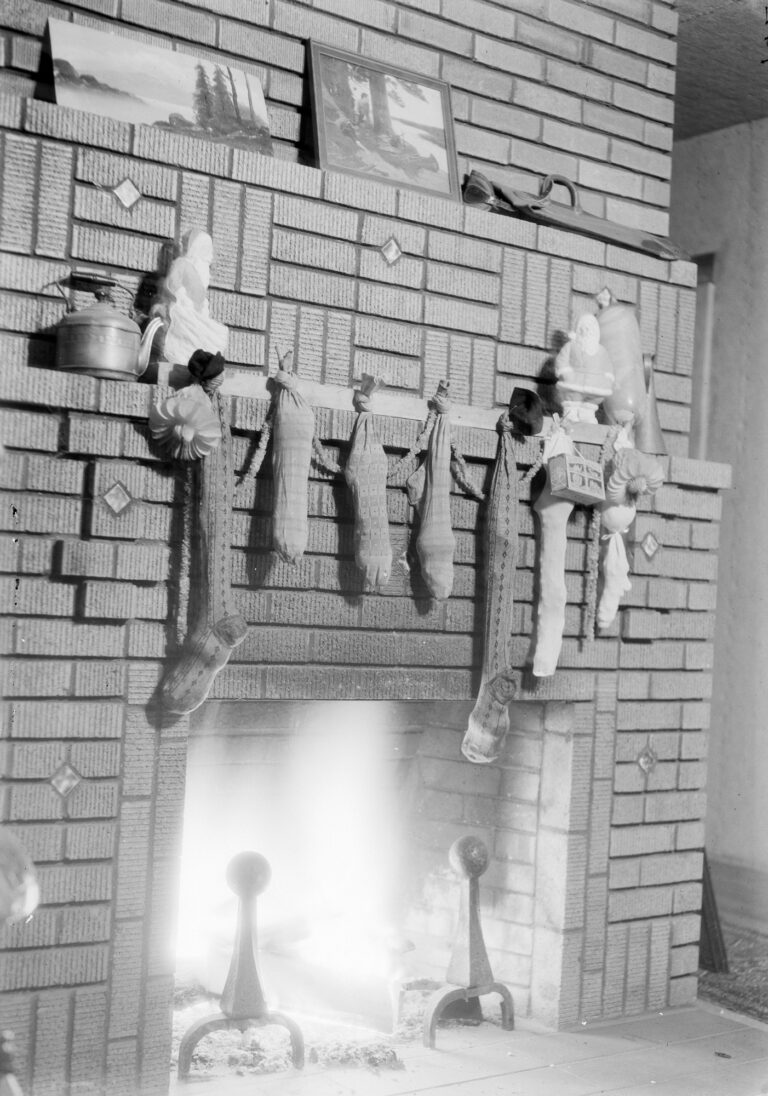
Trowbridge Pictorial, Christmas stockings above fireplace, c. 1923–1936. CHM, ICHi-151110; Raymond W. Trowbridge, photographer
In some European and Euro-American Christian households, this has translated to leaving shoes out on the eve of December 5 in anticipation of St. Nicholas filling them with small gifts and treats the next day—treats including candy!
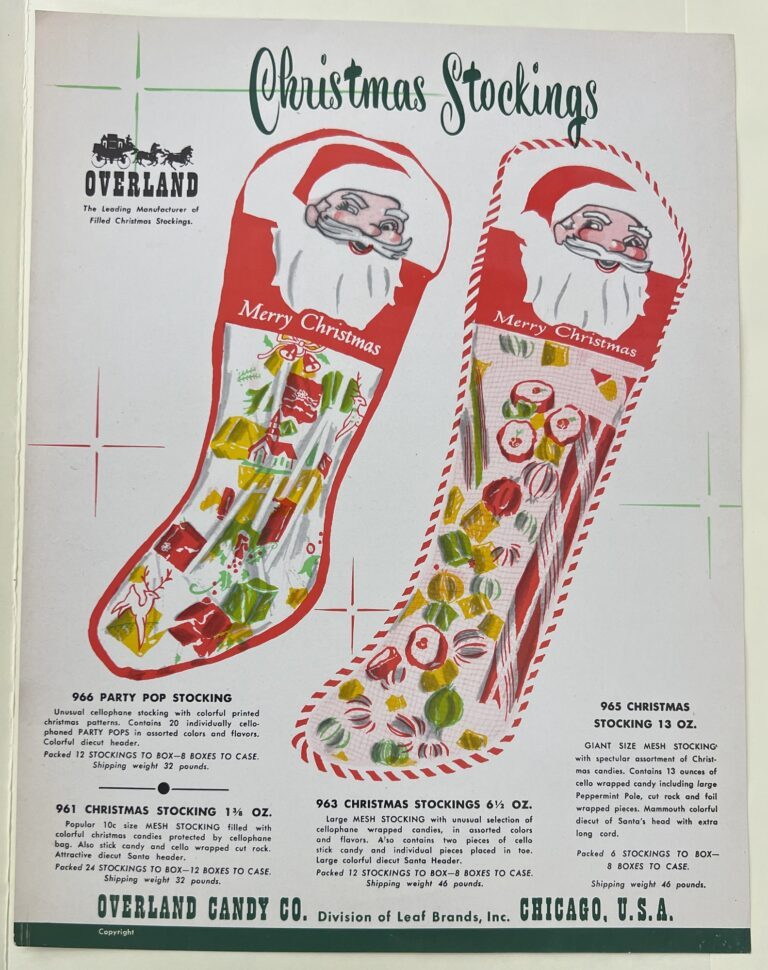
Christmas advertisement for Overland Candy Co. (division of Leaf Candy), c. 1955. Leaf Brands, Inc., ledgers and promotional materials [manuscript], 1926–1971, 2003.0043.47, box 2, folder 9
Chicago has long been a national leader in candy manufacturing. By the 1980s, nearly a fourth of all candy made in the United States was produced here. Cicero Avenue was once home to many makers of sweet treats, including Tootsie Roll Industries, E. J. Brach, Cracker Jack, Farley Candy Co., and Ward Candy Co., with Mars, Inc. just a few miles away in the western suburb of Oak Park. Another household favorite joined “Candy Row,” as this part of Cicero was known, in the 1940s, taking over a former munitions factory: Leaf Brands.
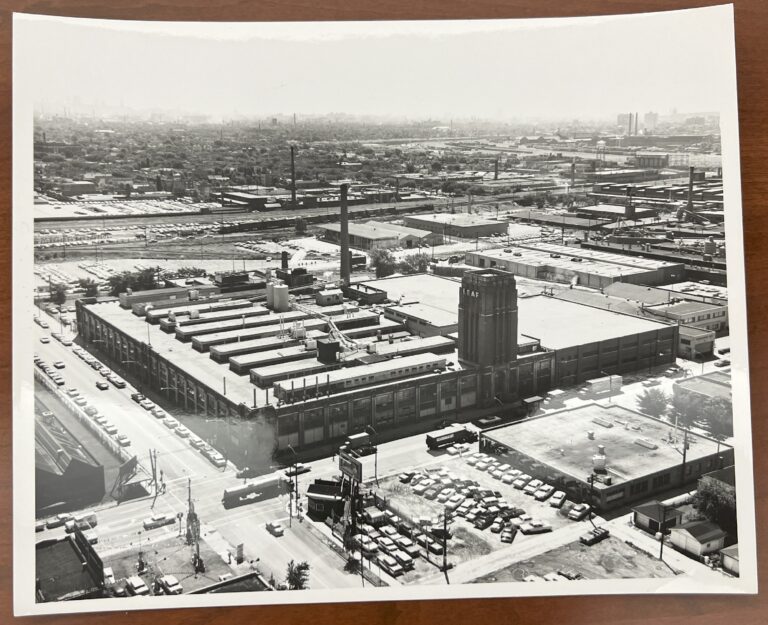
Leaf Candy factory at Division Street and Cicero Avenue, c. 1955. Leaf Brands, Inc., ledgers and promotional materials [manuscript], 1926–1971.
Though today reincarnated as a large international company, Leaf Brands began with a Jewish family selling candy. In 1907, Louis and Clara Lifschitz arrived in New York from Retchietza, Minsk, then in Russia and today in Belarus, with their children Morris, Harry, Bella, Solomon, and Samuel. Louis initially worked selling dried fruit. By 1920, the family name shifted from “Lifschitz” to “Leaf,” and Louis had established a candy manufacturing business.
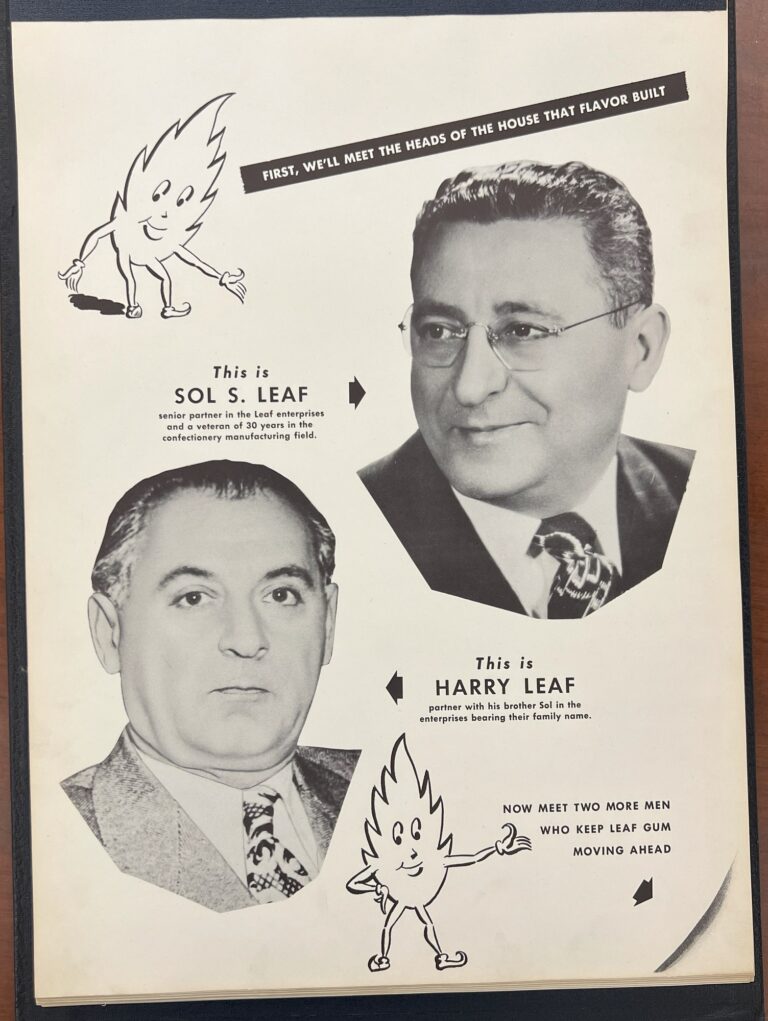
Leaf Candy owners Sol and Harry Leaf, from The Leaf Gum Story, Leaf Brands, Inc., ledgers and promotional materials [manuscript], 1926–1971, 2003.0043.47 Vol. 1
In the 1920s, son Sol Leaf made his way to Chicago, marrying Bertha Jaffe and making his own mark on the candy manufacturing industry. He, along with brother Harry, owned companies including the Milko Cone and Baking Co., the Overland Candy Corporation, and the Leaf Gum Company. Initially, they specialized in generic bulk candies (think hard candies you might find in your grandparents’ candy dish), chewing gums, and penny candy.
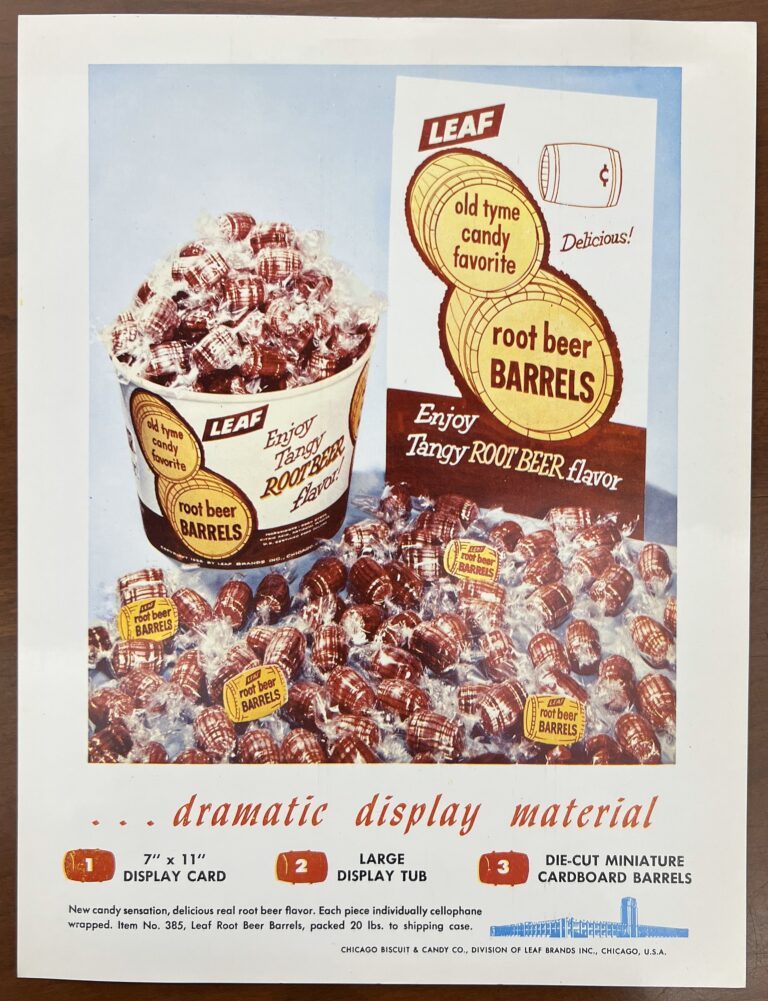
Leaf Candy’s Root Beer Barrel advertisement, c. 1955. Leaf Brands, Inc., ledgers and promotional materials [manuscript], 1926–1971.
In the 1940s, the companies merged to become the Leaf Confectionary Company (later Leaf Brands International). They would go on to become the makers of many household favorites, including Whoppers malted milk balls, Sixlets, Jolly Ranchers, and Milk Duds.
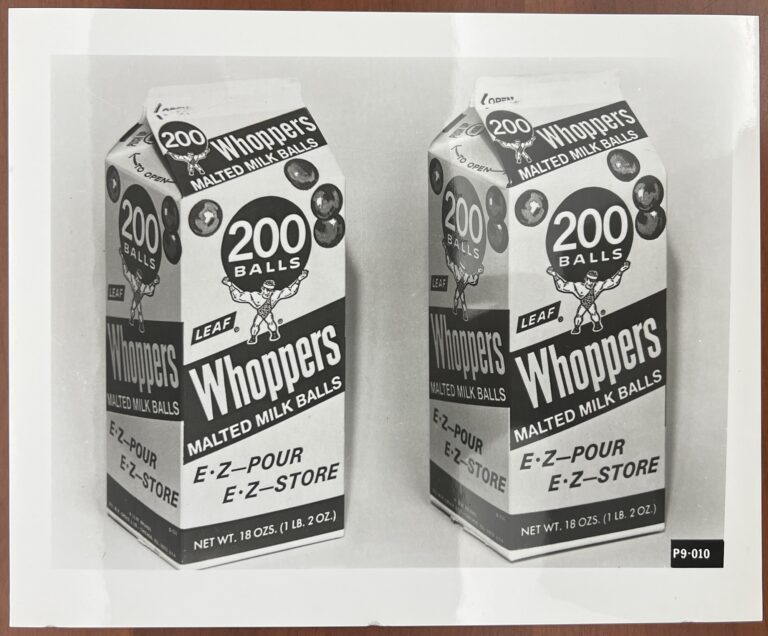
Leaf Candy’s Whoppers advertisement, c. 1955. Leaf Brands, Inc., ledgers and promotional materials [manuscript], 1926–1971, 2002.0008.
Their clever seasonal marketing made them a go-to for candy sales, including a number of special holiday lines for Halloween, Easter, and Christmas.
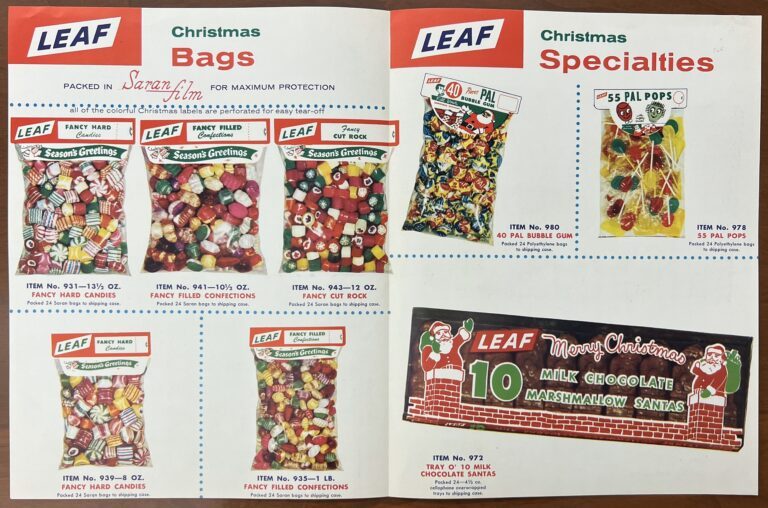
Leaf Brands, Inc., ledgers and promotional materials [manuscript], 1926–1971.
Through a series of international mergers, by the 1980s and 1990s Leaf had operations in seven countries and claimed a top place in global candy manufacturing. Its North American operations were eventually sold to the Hershey Foods Corporation, with a number of other mergers and acquisitions taking place overseas. A rebranded Leaf exists today with a smaller line-up of nostalgia-driven favorites.
The Leaf family’s arrival to the United States in 1907 coincided with a period of intense anti-Semitism against Jews in Eastern Europe after the assassination of Tsar Alexander II in 1881. Pogroms spread throughout what was then-Russia (today including countries such Ukraine, Belarus, Lithuania, and Poland), with Jewish businesses and homes targeted. European Jewish migration to the United States in this period reached a peak from 1906 to 1908, with most coming first to New York through Ellis Island. While most Eastern European Jews initially stayed in New York, some continued west to Chicago, settling in the city’s near West Side.
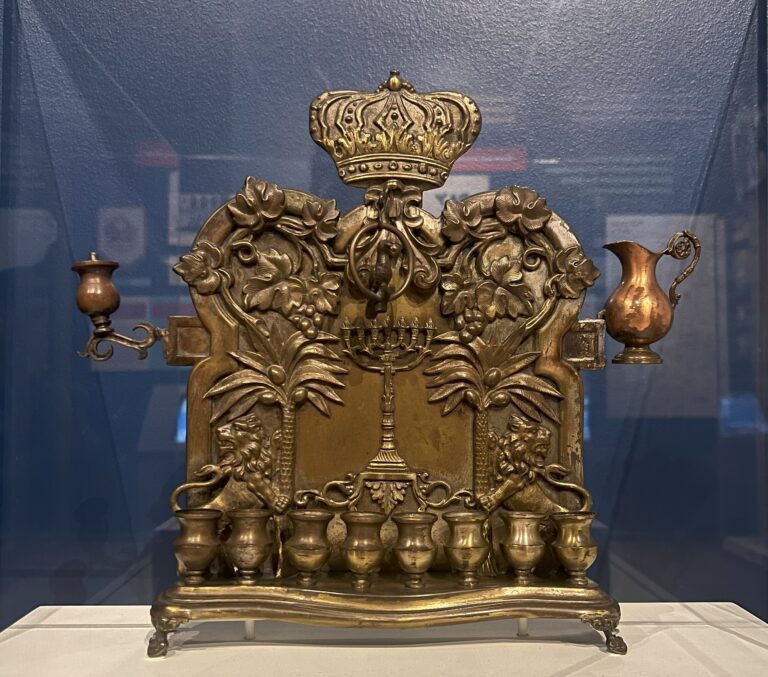
Hanukkiah, c. 1900. Metal. B. Buch/W.M.F., Warsaw, Poland. Collection of the Chicago History Museum, gift of Fredi Leaf. 2014.78.1
In addition to the Leaf Brand documents and other archival materials that can be accessed in the Museum’s Abakanowicz Research Center, a personal object from the Leaf family is featured in our exhibition Back Home: Polish Chicago. This hanukkiah was made in Poland c. 1900 and used by the Sol and Bertha Leaf family in their home. A hanukkiah, or nine-pronged menorah, is a special candelabra used during the Jewish celebration of Hanukkah. Bertha brought it when she immigrated to America in 1907. Its style, which represents the biblical Garden of Eden, was popular at this time and features palm trees, grape leaves, and animals. The eight vessel-like pieces along its base are used to hold eight candles—one for each night of Hanukkah—and the single vessel to the right holds the shamash, or “helper” candle, which is used to light the others.
The hanukkiah was passed from Sol and Bertha to their son, Marshall Leaf, and his wife Fredi. Fredi, who donated the hanukkiah to CHM in 2014, noted the hanukkiah was lovingly used by her in-laws for many years until it was later replaced by a midcentury modern design, though this beloved symbol of the old world remained in their home for many decades.